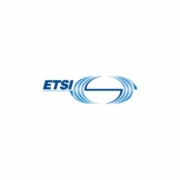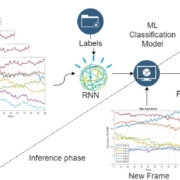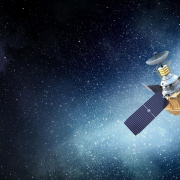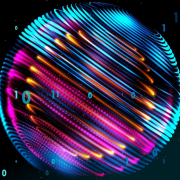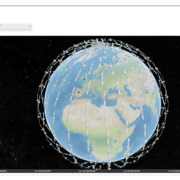HELENA project – when the sky is no longer the limit for 5G
The terrestrial 5G networks have been developed on the basis of global standards. On the other hand, satellite networks have been developed on the basis of proprietary access technology. The definition of the 3GPP 5G NTN standard constitutes the first technology framework able to support both terrestrial and satellite network deployment scenarios.
From this starting point, the HELENA project will foster the development of enhancements to the NTN standard to improve the service experience, address new bands, and support new use cases. The project was launched in February 2023 and will run for two years. HELENA (Highly skillEd sateLlite community mEmbers to drive 3GPP Non-Terrestrial Network standardization) is a project funded by the European Space Agency ESA and led by Nicolas Chuberre from Thales Alenia Space – France.
What is the HELENA project about?
The basis for this project has already been set in the past couple of years in previous ESA projects in which Magister Solutions has participated. Practically, HELENA is a continuation of the ALIX project, which promoted the standardization of the Non-Terrestrial Network (NTN). While ALIX focused on Release 17 implementation and Release 18 planning, HELENA focuses on Release 18 implementation and Release 19 planning.
However, HELENA is a separate, new project selected through an ESA competitive tender. By redeeming its place in this world-class project, Magister now has a remarkable opportunity to make an impact on a large scale.
“It’s great to be a part of a project like this: to influence the definitions of future standardized technologies. In the global context, we are a small company, but, in this project, our impact can be significant. We are doing significant things with great importance,” says Magister’s CEO, Jani Puttonen.
Other partners in this project are Thales Alenia Space France, Novamint, Fraunhofer IIS, TNO, CNIT, Airbus, and Eutelsat.
Unlike most of Magister’s projects, HELENA is not a simulator development project. Instead, it focuses totally on 3GPP standardization. The main objectives of the HELENA project are:
- to continue supporting the standardization effort of NTN within the 3GPP
- to capitalize on the investments made to date and secure the native integration of SatCom within the next generation of mobile networks
- to encompass the support to the NTN-related work items recently agreed for Release 18 as well as the preparation of NTN-related items for Release 19 and beyond.
Overall, the HELENA project aims to make NTN solutions more performant and enable new use cases.
Magister has several areas of responsibility in the project
Magister’s role in the HELENA project is mainly related to the following three tasks:
- Release 18 enhancements: How can the network’s performance be improved and new use cases generated? One of the goals is to improve the mobility of the 5G satellite network.
- To enable new uses: While Release 17 considered lower frequency (below 6 GHz) systems, new use cases requiring higher frequencies are being investigated. Terminal devices would no longer be mobile devices, but, for example, VSATs or ESIMs mounted on ships, cars or airplanes.
- Planning for Release 19: In late spring and summer 2023, it’s time to discuss and plan the contents of the next release, and contribute it to 3GPP. We are already looking into the future with this task.
Laying the foundation for future NTN solutions
What is particularly great about the HELENA project is the way it combines the satellite industry players’ forces. The satellite industry is quite a small sector in 3GPP, but through a project like this, the connected SatCom industry can make an impact.
Eight different players from the satellite industry participate in the HELENA project, and, even further, the project maintains and nourishes Satellite Standardization Interest Group (SSIG). SSIG is a community consisting of dozens of satellite industry actors whose goal is to influence the NTN standardization in 3GPP.
What can be achieved by promoting the standardization of NTN?
- New end users can be reached with satellite systems using NTN technology. Technology can enable, for example, automatic communication with cars, ships, or air traffic. There may also be NTN use cases on IoT technology.
- With higher frequencies, larger frequency bands become available, and we can send larger amounts of data. This also increases the number of use cases.
- NTN brings better opportunities for implementing more reliable emergency services. Emergency calls and text messages using NTN can be introduced globally. For example, the governmental and emergency services will benefit from this technology.
- Standardization fosters a development of an ecosystem enabling faster to market, a large number of manufacturers, and healthy competition, resulting in lower pricing for the end user.
